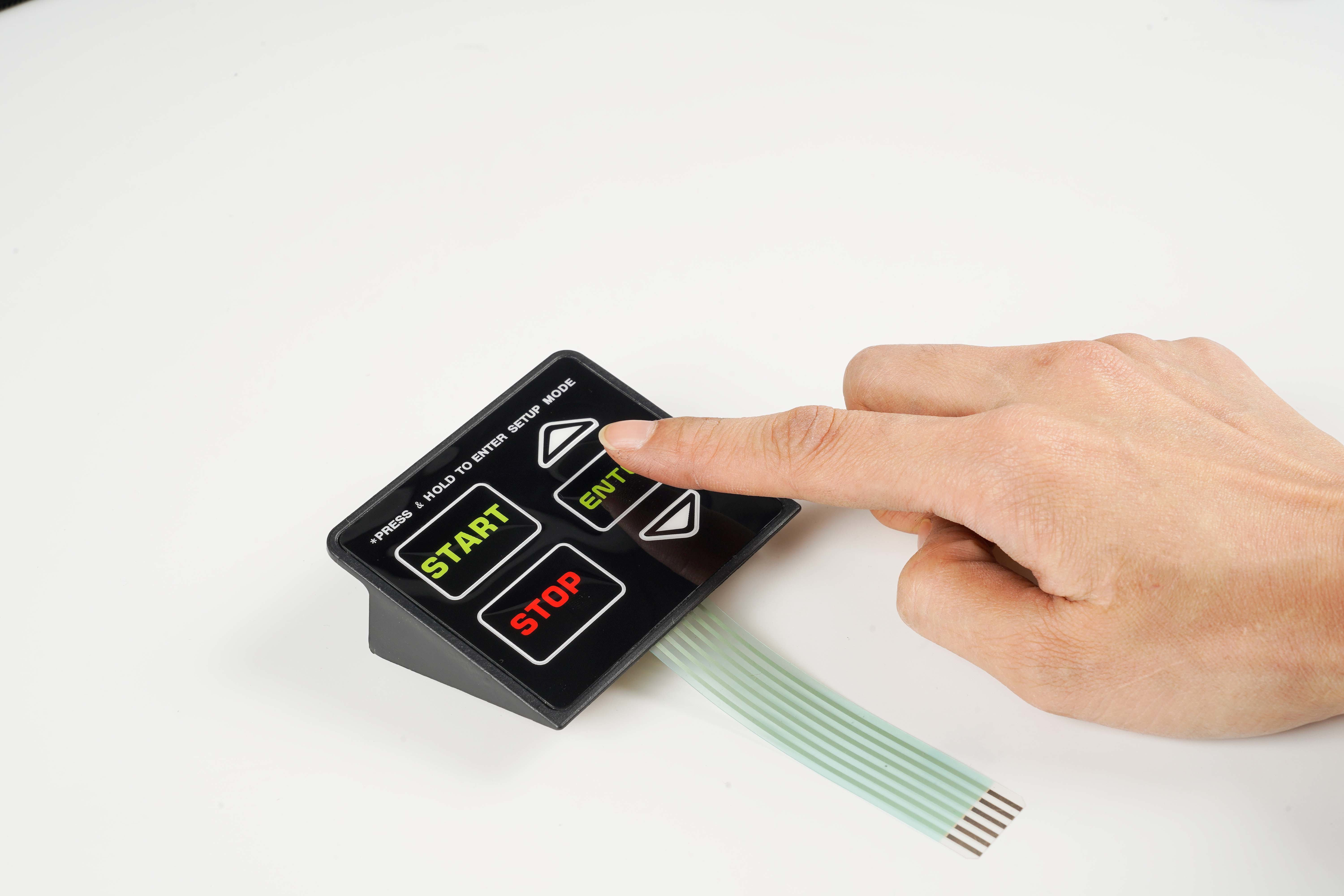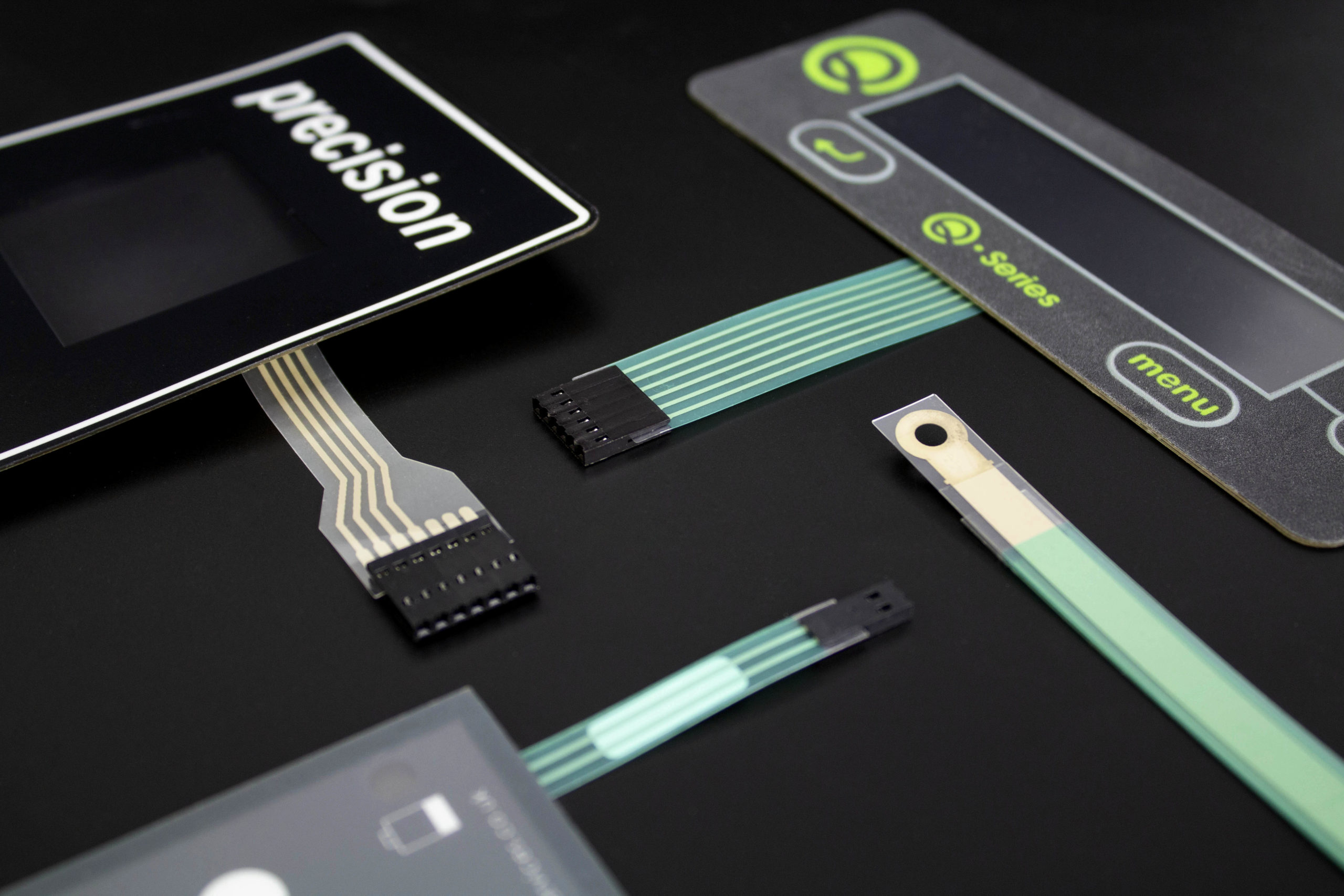The complete guide about membrane switch customization
Wiki Article
The Manufacturing Refine Behind Membrane Layer Switch: What You Required to Know
The manufacturing procedure behind membrane switches over combines cautious design, product selection, and top quality control. It begins with recognizing the complexities of membrane layer switch layout and advances via different phases, including product choices and printing methods. Each stage plays a necessary role in making sure functionality and toughness. The complexities of layer building and construction and the rigorous testing requirements might reveal insights that are not quickly apparent. What lies past these fundamental elements?Comprehending Membrane Layer Switch Over Design
Membrane layer buttons might show up straightforward at first glance, their style includes detailed factors to consider that guarantee functionality and sturdiness. The style procedure starts with a detailed understanding of user requirements, including the interface's intended application and environmental factors. Ergonomics is a key element, as the layout must help with ease of use while ensuring that tactile responses fulfills customer expectations.Moreover, the layering of parts, such as graphic overlays, sticky layers, and conductive traces, need to be exactly engineered. membrane switch. This layered configuration not just affects the switch's responsiveness however also affects its longevity. Attention is offered to the sealing techniques used to protect against wetness and dust, which might compromise efficiency. Additionally, layout factors to consider prolong to looks, where color schemes and aesthetic clearness enhance customer experience. Inevitably, the style of membrane layer switches over balances performance, user experience, and durability, making certain that they satisfy the demands of numerous applications successfullyMaterials Made Use Of in Membrane Switch Over Production
When selecting products for membrane button manufacturing, it is important to consider both performance and toughness. The primary products include polyester and polycarbonate movies, which provide adaptability and strength. These films are usually coated with glue to guarantee correct bonding to substrates. Conductive inks, normally composed of silver or carbon, are important for creating electrical links within the switch, enabling for reliable operation.Additionally, a safety layer, such as a tough coat, is often put on enhance scrape resistance and long life. The choice of backing material, such as acrylic or foam, can substantially impact the switch's responsive feeling and overall individual experience. Different ecological variables, including temperature and humidity, must assist product option to guarantee peak performance in particular applications. Eventually, the ideal mix of products adds to the membrane switch's performance and lifespan, making notified options necessary for suppliers.The Printing Refine: Creating Video and Text
The printing procedure in membrane button production plays a significant duty in producing premium graphics and text. Numerous visuals style techniques are employed to assure aesthetic appeal and performance, while careful ink option methods are crucial for resilience and performance. Understanding these elements is basic for attaining ideal lead to membrane layer switch layout.Graphic Design Techniques
Graphic style strategies play an essential role in the printing process of membrane layer buttons, as they define how graphics and text will eventually appear on the last product. Efficient visuals design involves the critical usage of shades, typefaces, and layouts to enhance readability and aesthetic charm. Developers typically make use of vector graphics for scalability, making sure that images stay sharp at numerous dimensions. Additionally, attention to comparison and alignment is essential, as it influences individual interaction and visual high quality. The unification of branding components, such as logos, need to be managed with like maintain brand stability. Overall, thoughtful graphic style techniques contribute substantially to the capability and good looks of membrane layer buttons, impacting customer experience and product efficiency.Ink Selection Approaches
Choosing the ideal ink is essential for accomplishing the preferred visual quality and sturdiness in membrane layer button production. Various ink kinds are made use of, consisting of solvent-based, water-based, and UV-curable inks. Each type supplies distinct characteristics, such as versatility, adhesion, and resistance to ecological elements. Solvent-based inks are typically favored for their longevity and dynamic colors, while water-based inks are extra eco-friendly but might have restrictions in adhesion. UV-curable inks provide fast treating and robust efficiency. In addition, shade matching methods assure that the picked inks align with layout specifications. Ultimately, the selection of ink need to consider variables such as application technique, substratum compatibility, and end-use needs to attain premium cause membrane button graphics and message.Layer Construction and Assembly

Material Option Refine
A mindful option of products is necessary in the production procedure of membrane layer buttons, as it straight affects performance and resilience. The main products used consist of polyester, polycarbonate, and numerous conductive inks. Polyester is commonly favored for its outstanding resistance to chemicals and abrasion, making it appropriate for extreme environments. Polycarbonate, on the other hand, provides exceptional clarity and effect resistance, which is useful for applications needing visibility and toughness. Conductive inks, normally made up of silver or carbon, are crucial for creating trusted electrical paths. Furthermore, the option of adhesive materials impacts the total stability of the switch - membrane switch. Reviewing variables such as environmental exposure, responsive responses, and visual requirements overviews manufacturers in selecting the very best materials for their specific applicationsLayer Bond Techniques
Adhering layers in membrane layer switch building and construction is an essential process that guarantees performance and long life. Numerous adhesion strategies are utilized to safeguard optimal bonding in between layers, which typically consist of the use of adhesives, warm, and pressure. Pressure-sensitive adhesives (PSAs) are generally used for their ease of application and instant bonding capabilities. Additionally, thermal bonding techniques can be used, where warm is made use of to turn on adhesive residential properties, safeguarding a strong bond. The selection of attachment technique greatly relies on the products entailed and the particular application demands of the membrane switch. Proper alignment and uniform application of adhesives are necessary to protect against flaws, protecting the button runs properly throughout its intended lifespan.Quality Assurance Procedures
Guaranteeing quality assurance during the layer construction and assembly of membrane layer buttons is vital for keeping performance and dependability. This procedure typically includes numerous critical steps, consisting of thorough evaluations at each stage of manufacturing. Suppliers utilize advanced testing techniques, such as peel examinations and attachment analyses, to verify the integrity of layer bonds. Furthermore, visual assessments are performed to recognize any kind of issues in printing or material inconsistencies. Environmental conditions, such as temperature and humidity, are thoroughly kept track of to ensure optimal treating and bond. Additionally, normal calibration of devices assists preserve accurate manufacturing standards. By carrying out these quality assurance steps, producers can significantly decrease the risk of item failing, ensuring that the final membrane switches over fulfill the needed specifications and customer assumptions.Checking and Quality Assurance Steps

Innovations in Membrane Layer Change Innovation
As advancements in modern technology remain to develop, membrane layer buttons are benefiting from cutting-edge advancements that enhance their capability and individual experience. One noteworthy technology is the combination of capacitive touch technology, which enables more responsive and user-friendly interface. This change not only enhances aesthetic appeals but additionally lowers mechanical deterioration, prolonging the lifespan of the switches.Additionally, advancements in visuals overlay products have caused improved sturdiness and resistance to ecological factors such as wetness and UV light. These products you could try these out currently offer boosted quality and illumination, more boosting the visual appeal.Furthermore, the consolidation of clever technology is transforming membrane changes right into interactive control panels, making it possible for connectivity with IoT gadgets. This connectivity promotes a smooth user experience, leading the way for applications in various markets, from medical care to consumer electronics. Collectively, these technologies position membrane changes as essential components in contemporary gadget layout.Regularly Asked Questions
For how long Does the Membrane Layer Switch Over Production Refine Take?
The duration of the membrane switch manufacturing process can vary significantly. Variables such as intricacy, products used, and production volume influence timelines, with normal manufacturing ranging from a couple of days to a number of weeks for completion.What Are the Usual Applications for Membrane Buttons?
Membrane buttons are typically used in numerous sectors, consisting of automotive controls, family devices, clinical gadgets, and customer electronic devices (membrane switch). Their adaptability and longevity make them ideal for applications requiring user-friendly user interfaces and trusted efficiency in varied atmospheresCan Membrane Switches Be Customized for Specific Demands?

What Is the Life expectancy of a Normal Membrane Layer Switch?
The life expectancy of a regular membrane switch varies, however normally, it varies from 1 to 5 million cycles. Variables such as usage, environment, and material high quality considerably affect durability and overall performance in time.

Are Membrane Layer Switches Over Eco-friendly?
The ecological friendliness of membrane switches varies. Some products made use of might not be recyclable, while others can be environment-friendly. The general effect depends upon manufacturing practices and products, requiring careful consideration throughout choice and disposal. The manufacturing process behind membrane layer switches over combines cautious design, product option, and high quality control. It begins with understanding the details of membrane layer switch layout and proceeds with various phases, including material selections and printing methods. When selecting products for membrane button production, it is vital to contemplate both efficiency and sturdiness. A careful option of materials is click this link essential in the production process of membrane layer switches, as it straight influences capability and toughness. The choice of attachment method greatly depends on the materials entailed and the certain application requirements of the membrane layer button.Report this wiki page